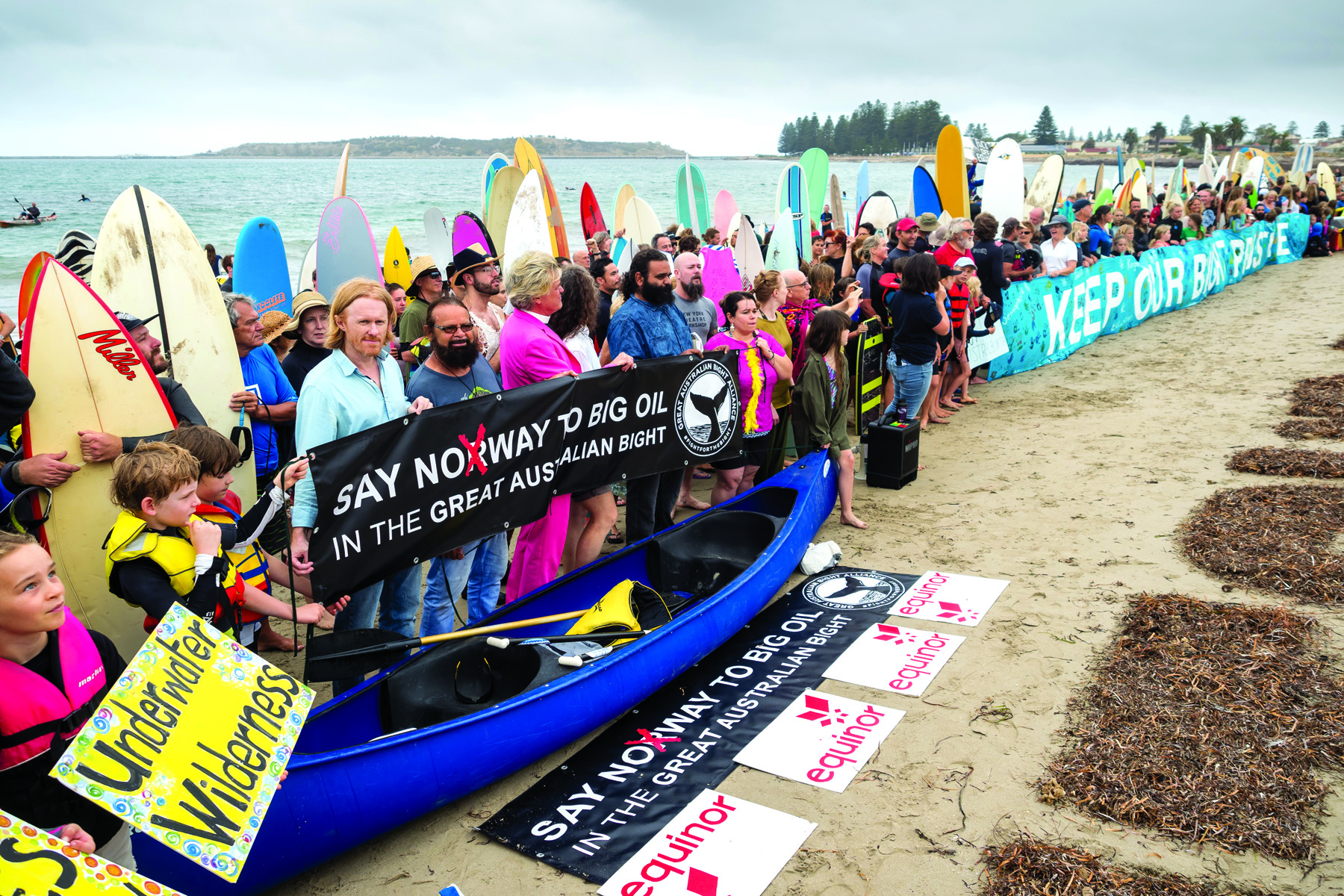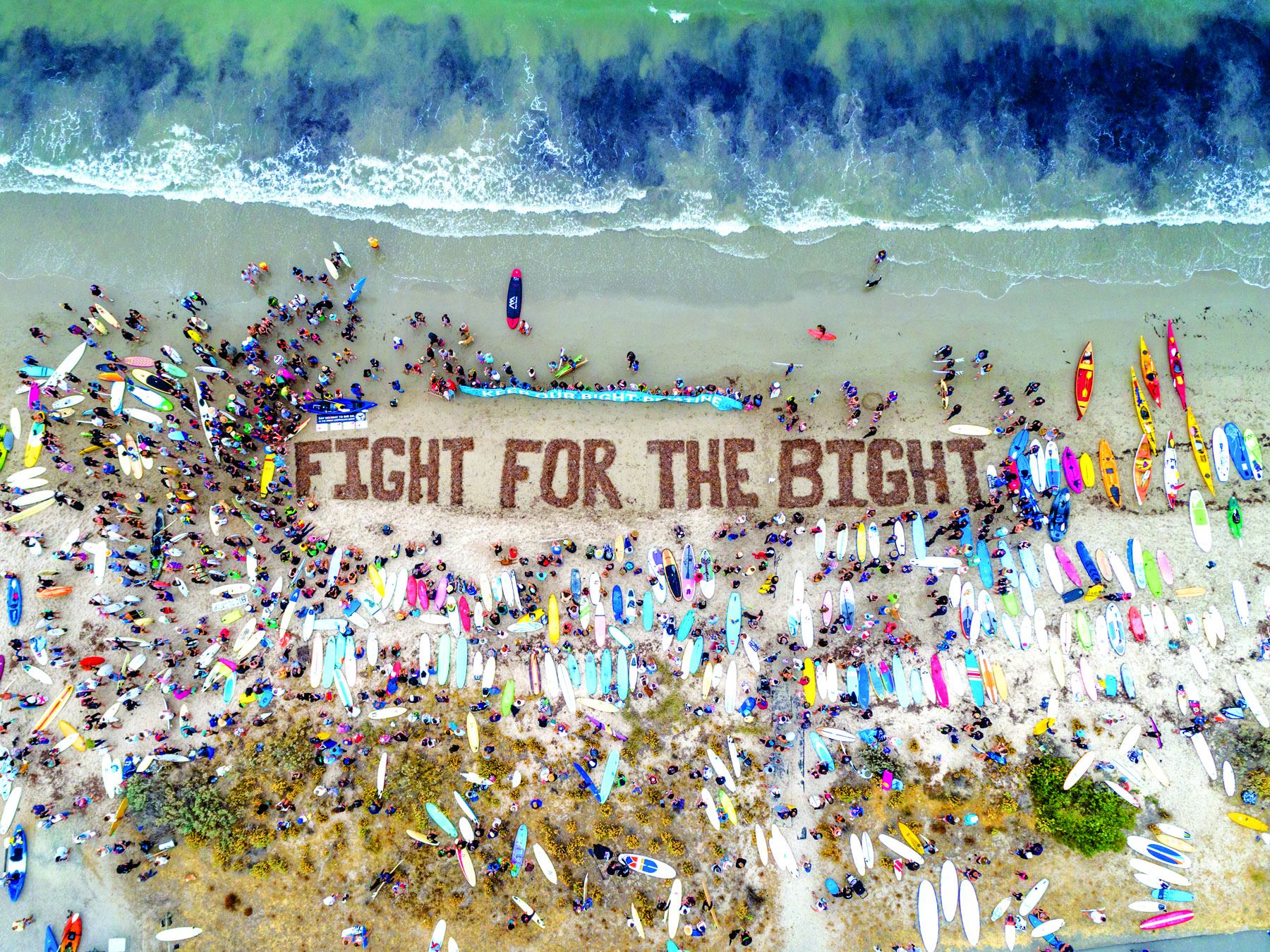Back in February, Norwegian oil company Equinor put forward their draft environmental plan for underwater oil drilling off the coast of the Great Australian Bight. Such drilling, less than 400km offshore, would expose the precious marine region – and the seaboard both east and west – to the potential destruction of an oil spill.
Now, we are able to put Australia’s opposition to the proposed drilling into numbers. A public submission period, spanning a month to March 20, gave the public the chance to share their concerns about Equinor’s plan. Over 30,000 submissions were made in total.
Additionally, research from The Australia Institute has shown that 60 per cent of Australians oppose oil drilling in the Bight, with even stronger opposition in South Australia at 68 per cent. The research also showed that only one in five Australians and one in six South Australians support it.





Aussies have proactively expressed that disapproval, through many shows of determination and solidarity around the country. This has included many public paddle outs into the ocean around the nation, with one such paddle out in Port Lincoln, 476km from the proposed oil drilling site, drawing over 600 people onto the water.
The plan has even incited, as of mid-April, 17 resolutions from different councils against the drilling.
This opposition is a justified response to the risks, and is only bound to increase as time goes on, the SA Director of the Wilderness Society and one of founding members of the Great Australian Bight Alliance, Peter Owen, says.
“It’s a pretty irresponsible proposal that’s being put forward here and I think the Australian public can see if for what it is – high risk,” he says.
“This level of opposition that we’re now seeing is almost unheard of in Australia... I would hope that Equinor would be taking that into account and making sure they allow that to inform their decision about whether they’re going to continue to proceed with putting in applications to the Australian oil and gas regulator at all.
“It’s at the wrong time in history in terms of pushing to expand the fossil fuel industry. We’ve got a serious issue with climate change... We’ve got to be transitioning out of the existing industry, not pushing to expand the industry.
“It’s also very much the wrong place... This is a pristine marine environment. The Bight is an area that Australians treasure, covered in state and federal marine parks, which is a testament to its ecological importance.”
The importance of this marine environment is, in fact, scientifically established. As part of the Great Australian Bight Research Program, a collaboration between BP, CSIRO, SARDI and University of Adelaide and Flinders University, more than 100 scientists have undertaken research to get a better grasp of the Bight’s unique environment. Outdoor caught up with Dr Kerstin Bilgmann, who along with Dr Guido J Parra and Associate Prof. Luciana Möller, undertook aerial surveys of 30,000 square kilometres in the relevant area a few years ago.
“We found really high numbers in common dolphins – around 20 to 22 thousand of them,” Dr Bilgmann says. “Closer to shore we found a lot of bottlenose dolphins as well – potentially a new species that’s endemic to South Australia.
“The area is a potential emerging area for the endangered southern right whales... We believe they use the area to transit to and from the breeding grounds in the Great Australian Bight.
“In the area, there’s prevailing south-easterly and south-westerly winds, so let’s say there was deep water drilling and an oil spill did occur, the likelihood that that oil would be shifted towards shore through current and the wind would be quite high.
“So there would very likely, depending on the amount of oil that would be spilled, be quite some impact on the Great Australian Bight.”
Indeed, that impact would not just be on the Bight; Equinor’s own modelling projects that in a worst case scenario an oil spill could spread as far west as WA’s Margaret River and east as NSW’s Port Macquarie, as well as completely surrounding Tasmania.
“Oil has quite a large impact on the habitat, on cetaceans, and it can absolutely lead to a loss of biodiversity, and to, in the worst case scenario, cetacean death, as we know has happened in the Deepwater Horizon oil spill,” Dr Bilgmann says.
“There would be toxins going into the habitat, it would go up and down the food chain – bio-accumulation – and certainly that would have an impact on a lot of species in the Great Australian Bight.
“It’s such a pristine environment, there’s such a high number of endemic species and biodiversity, that would be very devastating.
“If it was up to me I would prefer the seismic surveys and the drilling would not occur in the area, at all. If I speak for the Great Australian Bight, the less risk the better, for the environment, for the biodiversity, for the wildlife. It is an incredibly amazing, unique area that we have and I hope that we can conserve it for the future.”
What happens next? The big decision maker in all of this is NOPSEMA (National Offshore Petroleum Safety and Environmental Management Authority), who are a government regulatory agency. NOPSEMA recently gathered the relevant matters raised by the public submissions and passed them onto Equinor, who in late April resubmitted a modified plan to the regulator — allegedly only making 13 concrete changes.
The decision is now in NOPSEMA’s hands, but Equinor can keep on revising and resubmitting if their proposal isn’t accepted the first time.
Equinor themselves say that, based on their experience, only 10 per cent of plans are accepted by NOPSEMA on first submission. That just means they’re steeling themselves for the “iterative process of resubmission”. They see themselves commencing drilling in the summer of 2020/2021.
Of course that won’t be happening if the Australian public has anything to do with it. Because, even though the public submission period is over, there are still things you can do to have an impact, Peter Owen says.
“We’ve got a federal election coming up [on May 18], so we’d be encouraging people, if they’re concerned about the proposals to drill for oil in the Great Australian Bight, to contact their local federal member, raise those concerns, ask them what their party position is, and ask them to stop this drilling in the Bight,” he says.
“We’d never advocate people vote for a specific party, but certainly many of the independents and the cross-benchers have been raising quite serious concerns about what’s being proposed. So have the Greens. At the moment, we’re in the process of making sure the Labor party and the Coalition are well aware of the concerns as well.
“Get involved with any one of the many events that are happening across Southern Australia [find out about these on the Alliance’s Facebook page]. And continue to send your concerns to Equinor itself.”
Let’s hope that, in the end, common sense prevails. Outdoor will continue to follow this story.





